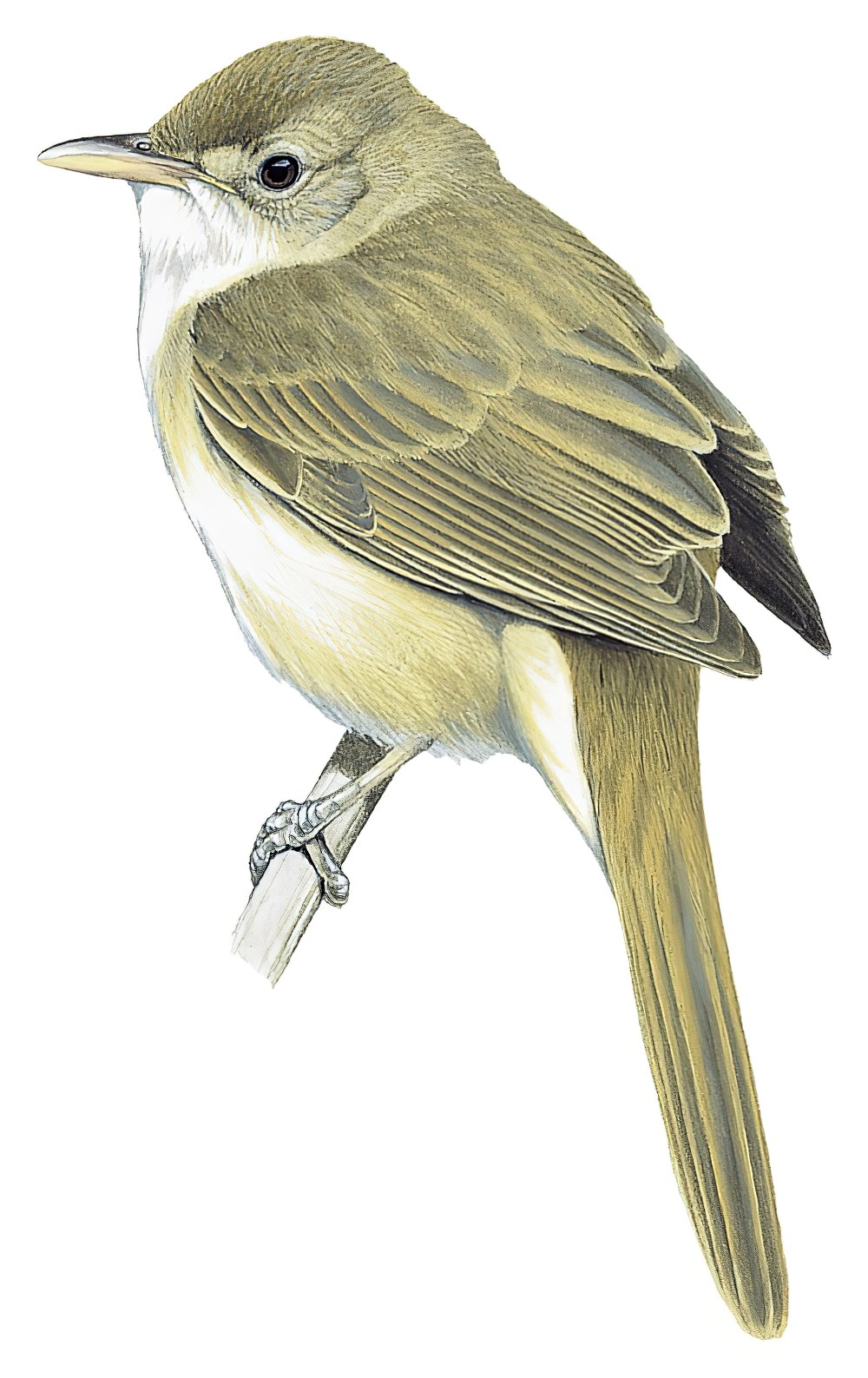Thick-billed Warbler / Arundinax aedon

Thick-billed Warbler
SCI Name:
Protonym: Muscicapa Aëdon ReiseVersch.Provin.Russ.Reichs 3 p.695
Taxonomy: Passeriformes / Acrocephalidae / Arundinax
Taxonomy Code: thbwar1
Type Locality: Dauria (= southeastern Transbaikalia, eastern Siberia).
Author: Pallas
Publish Year: 1776
IUCN Status: Least Concern
DEFINITIONS
ARUNDINAX
(Acrocephalidae; † Thick-billed Warbler A. aedon) L. arundo, arundinis reed; Gr. αναξ anax, ανακτος anaktos master, ruler; "Arundinax, nobis. This genus was first detected by Mr Jerdon, among a number of specimens of Calamoherpe arundinacea (?), which the only species as yet ascertained a good deal resembles, on a superficial view. ... Its true affinity, however, is with Sphenura and its allies, and not with the preceding group. The bill is somewhat more produced and tapering, slenderer and less laterally compressed, than in Sphenura, with barely discernible emargination of the upper mandible, and the rictal bristles are smaller and more slightly curved; rest as in Sphenura, but the tail-feathers narrow and much graduated. Ar. olivaceus, nobis. General aspect of Calamoherpe arundinacea (?), but at once distinguished by its shorter and thicker bill, and much more graduated tail-feathers." (Blyth 1845); "Arundinax Blyth, 1845, Journal Asiatic Soc. Bengal, XIV (II), no. 164, p. 595. Type, by monotypy, Arundinax olivaceus Blyth, 1845 = Muscicapa aedon Pallas, 1776." (JAJ 2020).
Var. Araudinax.
Synon. Phragamaticola.
aedon
L. aëdon, aëdonis nightingale < Gr. αηδων aēdōn, αηδονος aēdonos nightingale, songstress < αειδω aeidō to sing.
Aedon
L. aëdon, aëdonis nightingale < Gr. αηδων aēdōn, αηδονος aēdonos nightingale, songstress < αειδω aeidō to sing. In Gr. myth. Aëdon, wife to Zethus, was changed into a nightingale when, in attempting to murder the eldest son of her fecund sister Niobe, she killed her own son Itylus. In other versions of the legend she was metamorphosed into a goldfinch. The ICZN has banned the use of diacritic marks in scientific names, but in transliteration the Gr. aëdon should be so spelled, the diaeresis indicating that the second of the two vowels be pronounced separately. Similarly, amongst other examples, the ubiquitous Gr. combining form -oïdēs. Unhappily, whereas the removal of the German umlaut (ü) is compensated for by the addition of an e after the modified vowel, the removal of the diaeresis, a useful guide to pronunciation, leaves no trace of its passing.
• (Muscicapidae; syn. Cercotrichas † Rufous-tailed Scrub Robin C. galactotes) "VI. Fam. Sylviadae Vigors. ... Aedon: Sylvia galactodes Temminck u.a." (Boie 1826). "Aedon Boie, 1826, Isis von Oken, col. 972. Type, by monotypy, "Sylvia galactodes Temminck" = Sylvia galactotes Temminck. Not Aedon T. Forster, 1817." (JAJ 2019). This is the Rufous Bush Chat of an earlier generation of British birdwatchers.
• (Muscicapidae; syn. Luscinia † Thrush Nightingale L. luscinia) "101. SYLVIA LVSCINIA. Luscinia Aedon? ... 101. AEDON LVSCINIA. NIGHTINGALE." (T. Forster 1817); "Aedon Forster, 1817, Synop. Cat. Brit. Birds, pp. 14; 53. Type, by monotypy, Aedon luscinia Forster = Motacilla luscinia Linnaeus." (Ripley in Peters, 1964, X, p. 32).
• I have yet to locate or verify Aedon of Vieillot, referred to by Bonaparte, 1850, Conspectus, I (1), p. 286: "599. Ædon, Boie 1826. nec Vieill.".
• see Aedonis
SUBSPECIES
Thick-billed Warbler (aedon)
SCI Name: Arundinax aedon aedon
aedon
L. aëdon, aëdonis nightingale < Gr. αηδων aēdōn, αηδονος aēdonos nightingale, songstress < αειδω aeidō to sing.
Thick-billed Warbler (rufescens)
SCI Name: Arundinax aedon rufescens
rufescens
L. rufescens, rufescentis reddish < rufescere to become reddish < rufus red.
● ex “Aigrette rousse de la Louisiane” of d’Aubenton 1765-1781, pl. 902, “Aigrette rousse” of de Buffon 1770-1783, and “Reddish Egret” of Pennant 1785, and Latham 1785 (Egretta).
● ex “Gobe-mouche roux de Cayenne” (= ♀) of d’Aubenton 1765-1781, pl. 453, fig. 1, and de Buffon 1770-1783, and “Rufous Fly-catcher” of Latham 1783 (syn. Pachyramphus rufus).
● ex “Red-backed Pelican” of Latham 1785 (Pelecanus).
● ex Tringa fulicaria Linnaeus, 1758, and “Phalarope roussâtre” of Brisson 1760 (syn. Phalaropus fulicarius).
● ex “Ynambú guazú” of de Azara 1802-1805, no. 326 (Rhynchotus).
● ex “Crombec” or “Figuier à Bec Courbi” of Levaillant 1803, pl. 135 (Sylvietta).
UPPERCASE: current genus
Uppercase first letter: generic synonym
● and ● See: generic homonyms
lowercase: species and subspecies
●: early names, variants, mispellings
‡: extinct
†: type species
Gr.: ancient Greek
L.: Latin
<: derived from
syn: synonym of
/: separates historical and modern geographic names
ex: based on
TL: type locality
OD: original diagnosis (genus) or original description (species)












